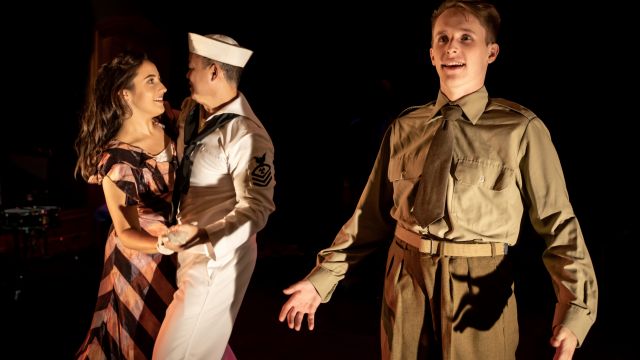Dear Ida
A trip back to the dance halls of WWII Australia – the good times and the not so good. The big band sound, the waltz, the foxtrot, the quickstep, the Gypsy Tap… Women’s work in factories, laundries, homes. Dressing up for a bit of fun on a Saturday night. The letters from faraway places: ‘Dear Ida… Of course, I can’t say where we are…’ In the newspapers, the casualty lists. The priest delivering the telegrams. The wowsers. The ridiculous claims of no alcohol, and no sex at the dances and after. The Yanks – overpaid, oversexed and over here – but such gentlemen, say the girls. The street brawls. The rampant promiscuity. Or the lonely soldiers who just want a bit of tenderness… And the generous women who give it.
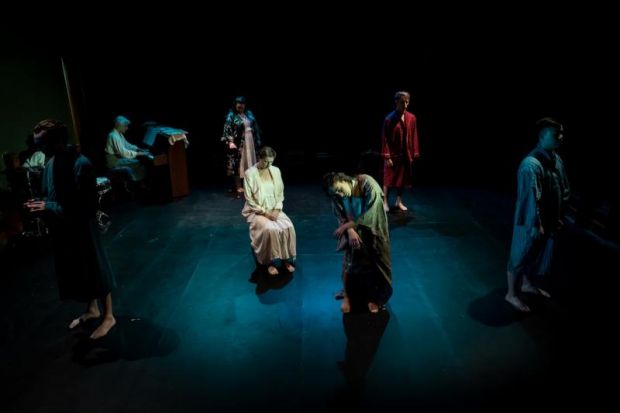
Dear Ida is ‘verbatim’ theatre – that is, playwright Lisa Petty has based her play on a selection of oral histories, interviews, letters, speeches, and newspapers of the period – and arranged them into an artistic form. The show is a curious experience: on opening night, maybe three quarters of the audience were Boomers. The play is nostalgia, in a way, for an audience (unless they were very small children) who did not in fact live through what’s on stage. Their parents did. The Boomers recognise the Glen Miller dance tunes. They remember the stories – true or not. Perhaps they remember grandma, the rhumba queen, or the uncle who never came back, or the older brother who was never the same…
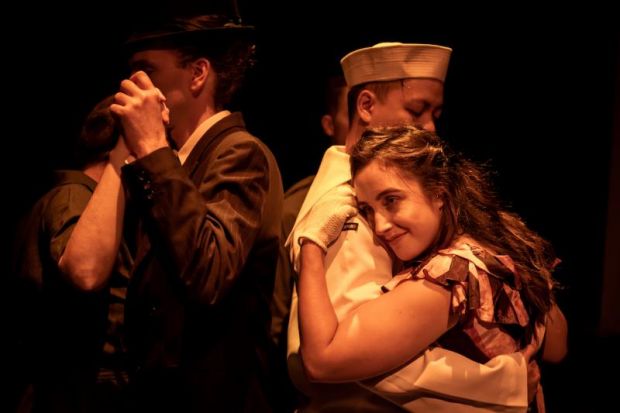
Lisa Petty has assembled a cast of representative types to tell the story, to create the tapestry of those war years. Sally Grange-Moore plays dignified Maureen, dance hall pianist. Maureen and a drummer (Gary Samolin) are always at every dance – and Maureen, ignoring the evidence of her own eyes, insists that all is correct and proper… Billie (Shanelle Sheehan) yearns for the dances and sings at them too. Her rendering of ‘Smoke Gets in Your Eyes’ is poignant and totally apt. Connie (Georgia Malaxos) loves to put on her pretty frock and dance, dance, dance. She falls in with American sailor Joe (Justin Tan), a hot swing dancer - but Connie swears he was always a perfect gentleman. Sure, Connie. There’s elegant, lovely Bette (Faye Bendrups), an exhibition dancer, always a little wistful, and her dance partner (Tom Halls) – and he gets a white feather for not enlisting. And there’s Harold (Oliver Tap) the young corporal who goes off to war with a spring in his step – and comes home blank, a shell of a man.
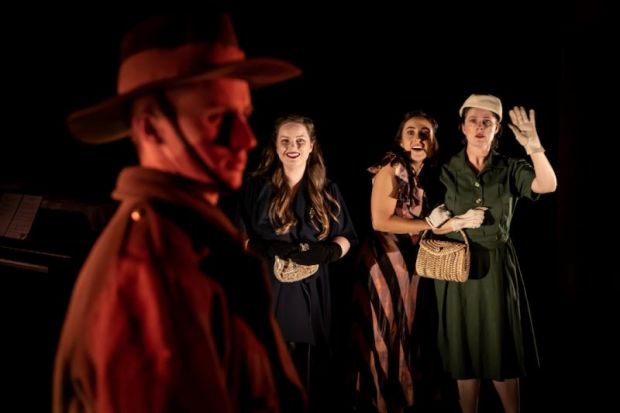
Lisa Petty’s choreography (with assistance from Gigi Vanegas) and movement direction are very often more expressive than the spoken words. There are many finely judged, detailed moments on stage. We see the women’s repetitive, deadening work and their breaking out on the dance floor. We see the desperate clinging of lonely souls on the dance floor. We see shattered poise and the brave fronts collapse. We see the dread as the black priest (Justin Tan), in his black soutane, passes. But despite these moving emotional touches, and despite a sort of narrative that does move from 1939 to 1946, there is a curious lack of a centre to the piece. It’s all ‘true’, but it is an assembly rather than a cohesive whole.
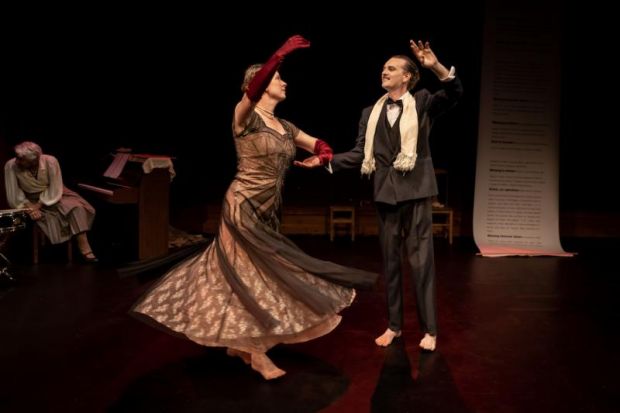
The place and significance of dance halls in Australia during WWII was initially the basis of Lisa Petty’s MA thesis. That may be the problem. Her research has clearly been extremely thorough, but as anyone who’s adapted research into a work of art knows, it all too easy to be too inclusive, to try to ‘cover’ too much, and lose the emotional heart. Here, in addition, Petty’s choices, though sensitive and intelligent, seem to be a just a little too genteel, too nice. The avoidance, for instance, of any sexual relationship or even experience is a bit coy and evasive when one would have thought that sex is central to the dance hall phenomenon. Here, it’s only reported – by an outraged press - rather than arising from the characters on stage.
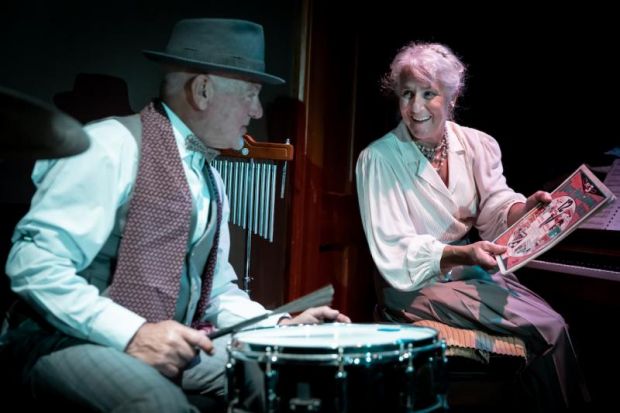
A far simpler, less academic work, on a farm smaller scale, like Barking Spider’s verbatim One From the Heart, representing the same 1940s period, is sweeter and more touching. Perhaps if Petty’s characters were less ‘representative’ and more character characters, a portrait of the time could be just as real and far more emotionally satisfying.
Michael Brindley
Photographer: Darren Gill
Subscribe to our E-Newsletter, buy our latest print edition or find a Performing Arts book at Book Nook.

